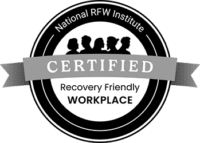How Leaders Can Build Psychologically Safe Workplaces
By Sue Zbikowski, PhD
Founder, inZights Consulting
Advisor, GoMo Health

As a leader, how do you build a team culture that is safe and inclusive? In this blog, Dr. Sue Zbikowski, PhD, Behavioral Scientist,Founder of inZights Consulting and advisor at GoMo Health, will dive into what exactly a psychologically safe workplace looks like and why it is so important to organizational culture, and employee health and wellbeing, as well as how you as a leader can begin to foster a psychologically safe workplace for your employees.
What is a psychologically safe workplace?
You may have heard the term “psychological safety” but don’t know what it means for you or the workplace.
A psychologically safe workplace allows employees to feel more comfortable sharing their ideas, raising concerns, and challenging others when they disagree or have a different approach or suggestion. Psychological safety is the belief that you won’t be punished or humiliated for expressing ideas, asking questions, stating concerns, reporting mistakes, or disagreeing. This concept arose from workplace and occupational experts at various organizations.
Why does it matter in the workplace?
Psychological safety is not just nice to have, it is an essential part of the workplace and can have a crucial impact on the success of an organization. Teams with strong psychological safety are less afraid of the negative consequences that may result from taking smart risks, making mistakes, and sharing their opinions within their team. It results in employees feeling like a respected and valued member of the team, which in turn encourages employees to see the value of their work, be more engaged, and deliver better results. When someone feels psychologically safe, they perform better all around.
In a psychologically safe environment, employees are more likely to:
- Be more productive, innovative, and creative at work
- Feel more comfortable disagreeing openly
- Feel more comfortable addressing concerns
- Approach problems differently
- Be vulnerable and take appropriate risks
- Feel more engaged
Models of Psychological Safety
There are various models showing the development of teams and psychological safety. Below are two examples.
Tuckman’s Model of Team Development is a way of thinking about how teams develop over time from forming, storming, norming, performing, and sometimes adjourning. These stages relate to how the team members interact with each other, the leader, and the task. By understanding these stages, team members can anticipate and prepare for potential issues that may arise during the team’s development process. This can help them work more effectively together and achieve their goals more efficiently.
Another model is the Four Stages of Psychological Safety, by Clark and colleagues. Members typically start by feeling a sense of belonging and participate by asking questions, then members begin to feel comfortable contributing their own ideas and when the final stage is achieved, members can question others’ ideas or suggest significant changes.
Although these models suggest that teams progress one step at a time through sequential stages or phases, development and growth do not always happen that way. You may find your teams moving at different rates, skipping steps, or regressing and advancing again later.
Leadership Qualities that Support Psychological Safety
There are six basic leadership qualities that have been empirically verified to distinguish the leaders of good versus great companies and note their connection to encouraging and nurturing psychological safety. These traits were described in the book From Good to Great, by Jim Collins (2001).
- Being humble or compelling modesty
- Acknowledge the contributions of the many employees who enable remarkable results
- Accept responsibility for failure
- Promote a learning culture
- Focus on achieving exemplary success
- Encourage self-motivation for meaningful work
While managers and supervisors are assigned their corporate positions, any employee can choose to be a leader by practicing the six qualities of good-to-great leaders as key to nurturing psychological safety. In addition to modeling these leadership skills, help your employees to learn and practice emotional intelligence and good communication skills.
Ways to Foster a Psychologically Safe Workplace
- Show you care by routinely checking in with your employees. When you do, demonstrate your concern and interest in them as people. Doing so can help team members feel more comfortable speaking up because they know you appreciate them as individuals and not just as employees.
- Establish an environment where employees feel like all ideas are welcome. You can do so by encouraging discussion and input from team members. Get into a routine of asking for input, encouraging others to disagree with or add to the discussion, and pausing long enough to allow the team time to formulate and voice their input. Listen, be open-minded, and suspend judgement. Remember, you do not need to act on every idea. Showing appreciation for their insights will go a long way in establishing psychological safety.
- Provide multiple ways for employees to share their thoughts. Some employees may be comfortable sharing in a meeting, but others may not. Of course, the goal of creating a psychologically safe workplace is that employees will feel more comfortable sharing in any setting. However, that won’t just happen overnight, and employees need to build comfort and competence in sharing this way. To get more input, allow employees to share in other ways outside of meetings. Encourage using Teams, Slack, email, etc.
- Encourage team members to use positive language. It can help the team to be more open to ideas and others’ points of view and to ultimately demonstrate a positive mindset.
- Help build self-awareness and emotional intelligence within your team. Self-awareness allows employees to better understand their attitudes, biases, and ways they act. Emotional intelligence can help employees learn how to recognize and label emotions they feel. Doing so can improve communication skills.
- Build trust by communicating clear expectations with the team. When timelines and priorities change, explain why so that the team can adjust to new expectations and understand the rationale.
- Failure can be frightening, and as a leader, you can take the sting out of it for your employees by owning up to the mistakes you’ve made and celebrating failures as learnings. Regularly ask employees what they’ve done that didn’t work out as expected and what they learned from those experiences. Doing so will help team members recognize that they won’t be punished for mistakes and help them feel more comfortable taking risks and speaking up.
As a leader, the tone and culture you set for your team can make or break your employees’ success and engagement and in turn, affect the success of the organization. When you employ these seven strategies, you will empower your employees to contribute toward achieving a common goal.







Find Us Online